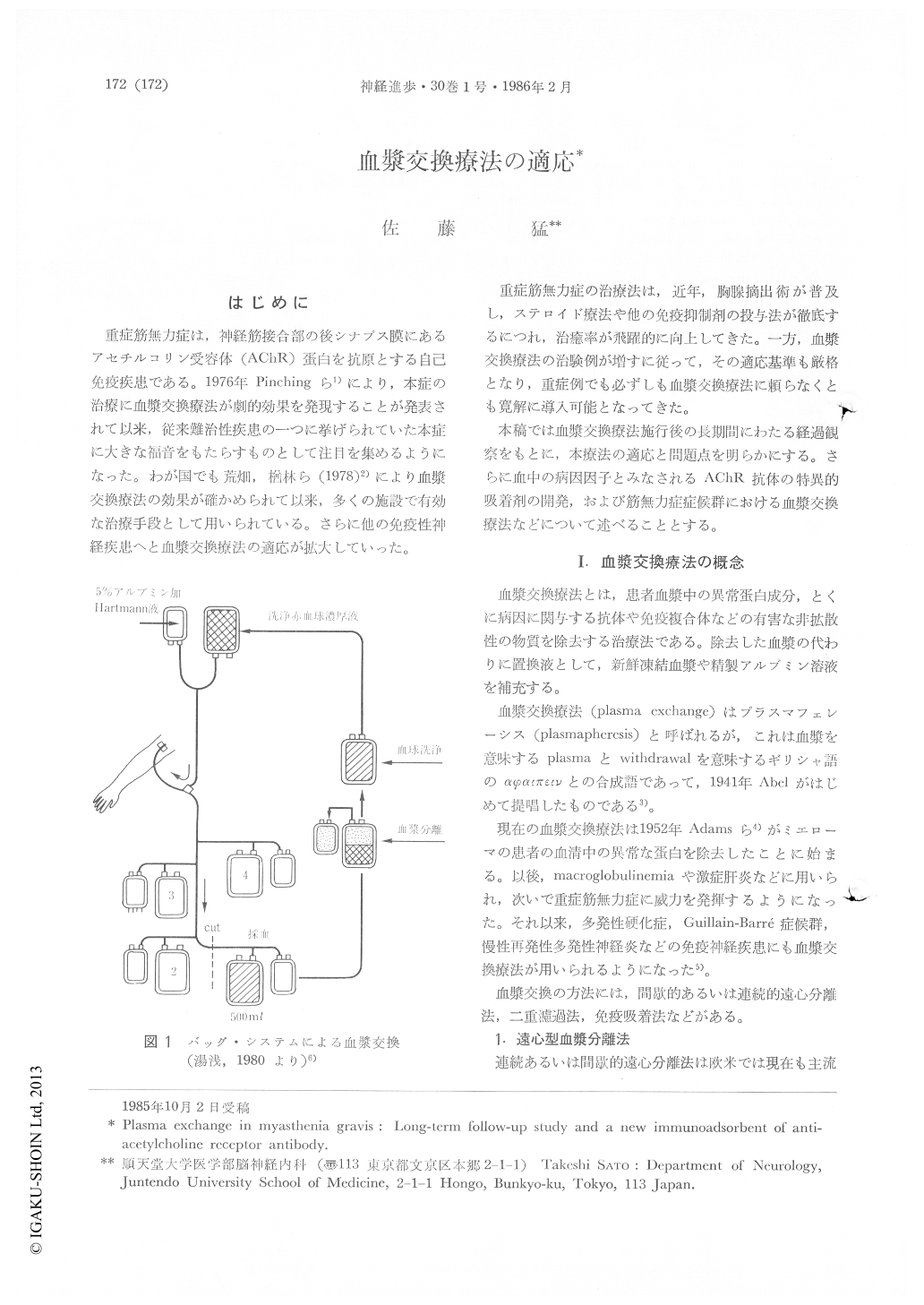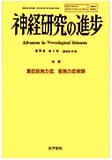Japanese
English
- 有料閲覧
- Abstract 文献概要
- 1ページ目 Look Inside
はじめに
重症筋無力症は,神経筋接合部の後シナプス膜にあるアセチルコリン受容体(AChR)蛋白を抗原とする自己免疫疾患である。1976年Pinchingら1)により,本症の治療に血漿交換療法が劇的効果を発現することが発表されて以来,従来難治性疾患の一つに挙げられていた本症に大きな福音をもたらすものとして注目を集めるようになった。わが国でも荒畑,楢林ら(1978)2)により血漿交換療法の効果が確かめられて以来,多くの施設で有効な治療手段として用いられている。さらに他の免疫性神経疾患へと血漿交換療法の適応が拡大していった。
重症筋無力症の治療法は,近年,胸腺摘出術が普及し,ステロイド療法や他の免疫抑制剤の投与法が徹底するにつれ,治癒率が飛躍的に向上してきた。一方,血漿交換療法の治験例が増すに従って,その適応基準も厳格となり,重症例でも必ずしも血漿交換療法に頼らなくとも寛解に導入可能となってきた。
1. Plasma exchange in myasthenia gravis:
30 patients with generalized myasthenia gravis were studied. They were divided into two groups. Group A: 16 patients were treated with both thymectomy and corticosteroids. Group B: 14 patients were treated with plasma exchange in addition to thymectomy and corticosteroids. In both groups, the patients were followed up for three to four years after thymectomy. Plasma exchange were carried out by a plasma exchange bags.
15 Group A patients showed a decreased titer of anti-AChR antibody at the end of first year. On the other hand, all Group B patients showed markedly decreased titers just after plasma exchange (the reduction rate was 70±20%). The mean percentage of reduction rate at the end of the first year was nearly the same in the both groups about 50%. Three to four years after plasma exchange, two patterns were noted in thelevels of anti-AChR antibodies. One corresponded to the group of the patients who showed a consistent decline in anti-AChR antibody, and the other, the group which showed an increased titer. Most of the patients who had higher levels of anti-AChR antibodies at the time of thymectomy showed higher levels through the period observed, while the patients who had lower levels at thymectomy maintained the lower levels.

Copyright © 1986, Igaku-Shoin Ltd. All rights reserved.


